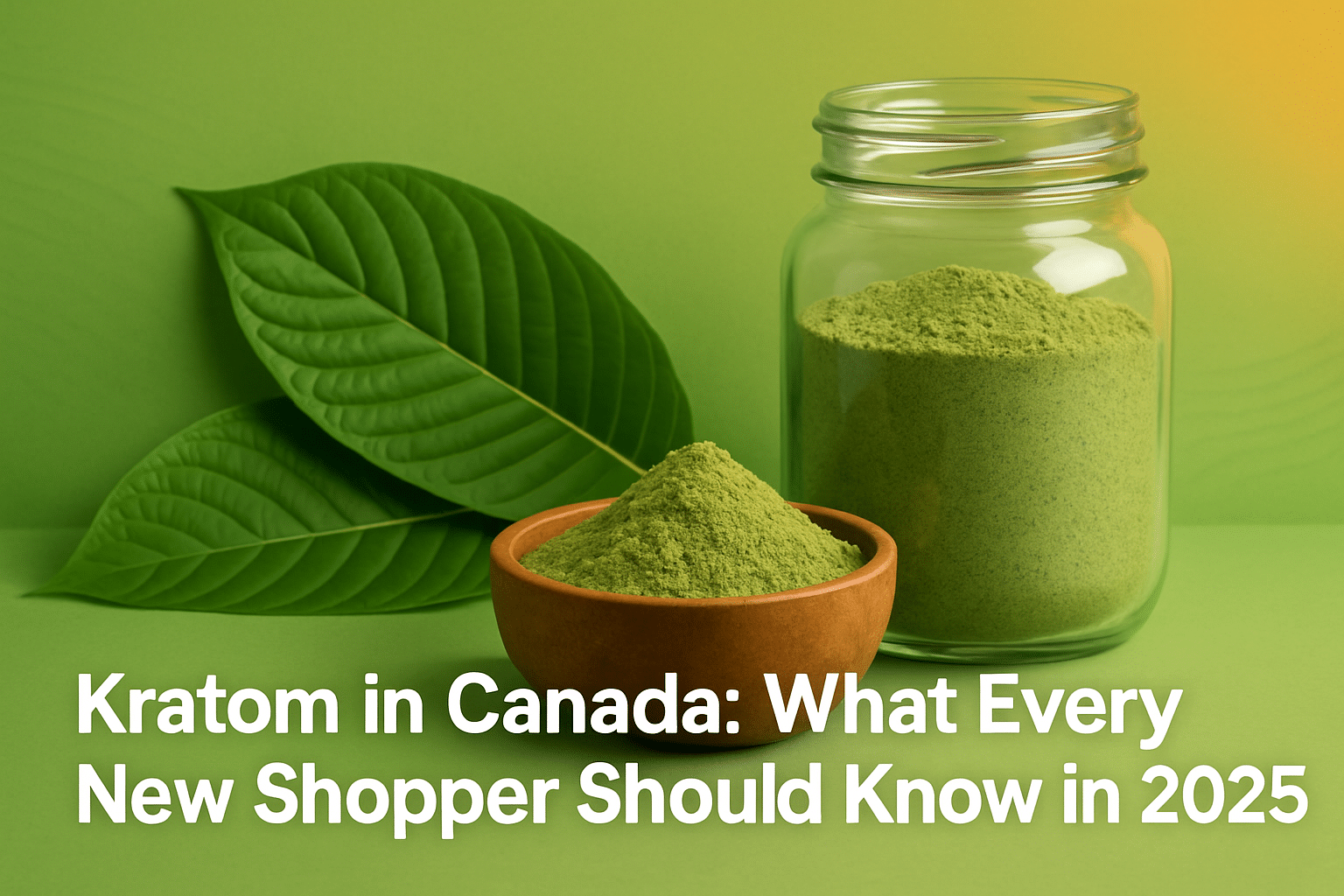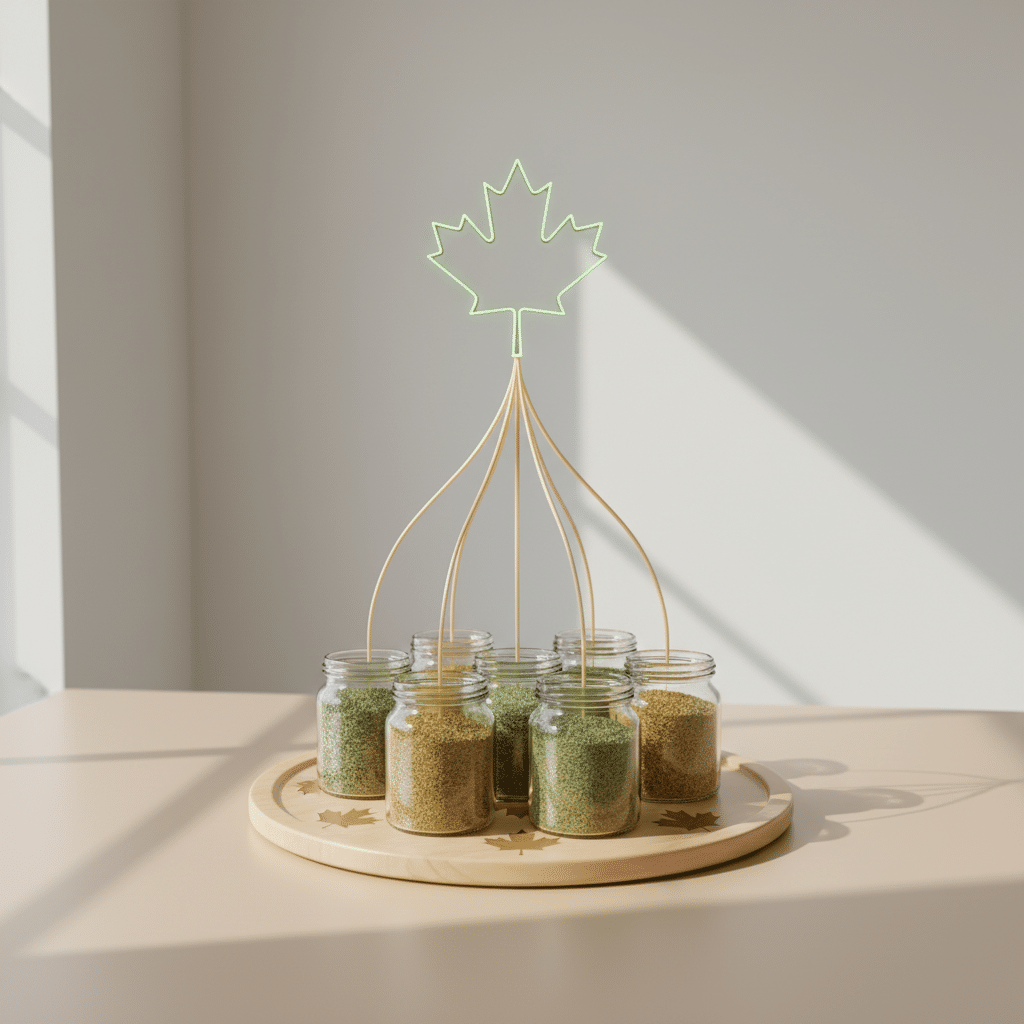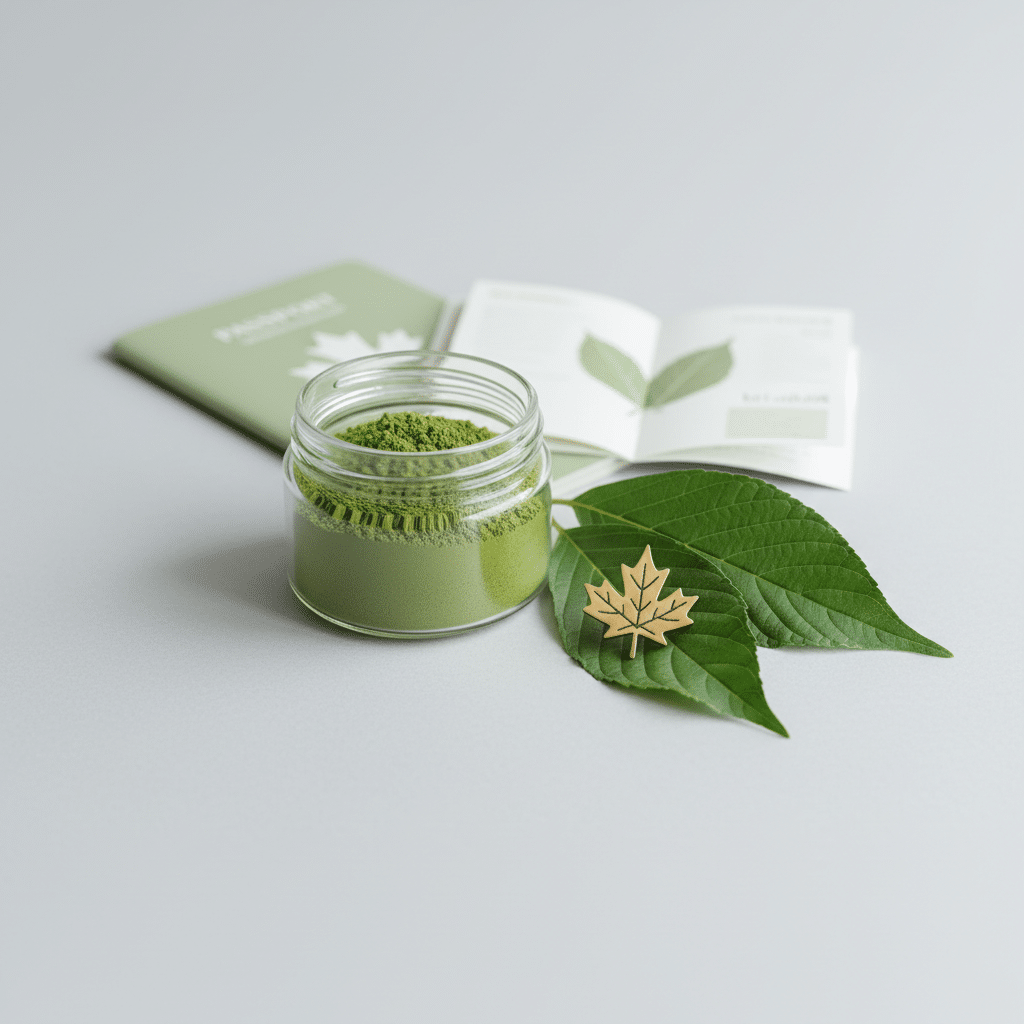
Introduction
Over 41% of Canadian adults are exploring natural alternatives for wellness concerns, making kratom an increasingly popular botanical option across the country. However, navigating the kratom market in Canada presents unique challenges that can overwhelm new shoppers. From understanding complex regulations to identifying quality products, first-time buyers face numerous pitfalls that could impact their experience.
This comprehensive guide addresses what every new shopper should know about kratom in Canada for 2025. You’ll discover essential information about legal requirements, quality standards, and trusted purchasing practices. Whether you’re researching kratom for botanical purposes or examining its aromatic properties, understanding these fundamentals will help you make informed decisions in the Canadian market.
Legal Status and Regulations for Canadian Kratom Shoppers in 2025
Current Legal Framework and Provincial Variations
Understanding kratom’s legal landscape in Canada requires careful attention to federal and provincial distinctions. Kratom is not federally banned in Canada, but Health Canada classifies it as an unapproved substance for internal use. Provincial enforcement varies in practice.
This classification creates a complex environment for kratom vendors and consumers. While possession isn’t criminalized, retailers must navigate strict labeling requirements. Products marketed for internal consumption face regulatory challenges that affect availability and pricing.
The distinction between federal non-ban status and provincial application creates varying enforcement levels across different regions. Some provinces apply more stringent oversight than others, affecting local market dynamics.
Import Regulations and Shipping Considerations
Cross-border shipping presents significant challenges for Canadian kratom shoppers. The Canada Border Services Agency (CBSA) maintains strict oversight of kratom imports. CBSA may seize shipments labeled for ingestion, making proper product labeling critical for import compliance.
Successful importation requires products labeled specifically for botanical, aromatic, or research purposes. Health claims or consumption instructions can trigger seizures at border crossings. Professional vendors understand these requirements and structure their documentation accordingly.
Domestic sourcing eliminates many import risks while supporting Canadian businesses. Local vendors familiar with regulations often provide more reliable shipping and customer service for kratom Canada 2025 legal status concerns.
Understanding Kratom Strains and Their Characteristics
Popular Strain Categories in the Canadian Market
Canadian kratom vendors typically offer three primary strain categories: red, green, and white vein varieties. Each category provides distinct alkaloid profiles that appeal to different research interests. Red vein strains generally contain higher levels of 7-hydroxymitragynine, while white veins feature more mitragynine content.
Best kratom strains Canada shoppers frequently request include Red Bali, Green Maeng Da, and White Borneo. These varieties represent reliable options with consistent alkaloid profiles across different harvests. Regional preferences often influence availability, with certain strains more popular in specific provinces.
Blend formulations have gained popularity among Canadian vendors, combining multiple strains to create unique alkaloid profiles. These proprietary blends often carry distinctive names and represent vendor-specific formulations designed for particular research applications.
Alkaloid Content and Quality Considerations
Mitragynine and 7-hydroxymitragynine represent the primary alkaloids of research interest in kratom products. Quality vendors provide detailed alkaloid content analysis through third-party testing. Understanding these concentrations helps researchers select appropriate specimens for their studies.
Seasonal variations affect alkaloid content, with harvest timing influencing potency levels. Experienced vendors track these variations and adjust their sourcing accordingly. Fresh harvests typically provide more consistent alkaloid profiles than aged materials.
Storage conditions significantly impact alkaloid stability over time. Proper handling from cultivation through distribution preserves these delicate compounds. Kratom alkaloid content Canada standards require careful attention throughout the supply chain.
Quality Standards and Lab Testing for Canadian Kratom Products
Essential Lab Tests Every Product Should Have
Comprehensive laboratory testing represents the foundation of kratom quality assurance in Canada. All kratom products should undergo heavy metals testing, microbial contamination screening, and alkaloid content analysis. These tests verify product safety and establish baseline potency measurements.
Heavy metals testing screens for lead, mercury, cadmium, and arsenic contamination. These contaminants can accumulate during cultivation or processing, making testing essential for safety verification. Acceptable limits follow international food safety standards, protecting end users from exposure risks.
Microbial testing identifies harmful bacteria, yeast, mold, and other pathogens that could compromise product safety. Professional laboratories test for E. coli, Salmonella, and total aerobic plate counts. Clean processing facilities and proper storage prevent most microbial contamination issues.
Certificate of Analysis (COA) Requirements
Legitimate kratom vendors provide Certificates of Analysis (COA) with every batch sold. These documents detail specific test results including alkaloid percentages, contaminant levels, and testing dates. COAs should originate from accredited third-party laboratories rather than vendor-operated facilities.
Reading COAs requires understanding acceptable ranges for various parameters. Mitragynine content typically ranges from 0.5% to 1.5% in quality products, while 7-hydroxymitragynine remains below 0.05%. Higher concentrations may indicate adulteration or extraction processing.
Batch numbers on COAs should match product packaging, ensuring test results apply to your specific purchase. Recent testing dates (within 6-12 months) indicate fresh products with current quality verification. Kratom lab testing Canada requirements continue evolving as the market matures.
Finding Trusted Kratom Vendors and Avoiding Common Pitfalls
Evaluating Customer Reviews and Vendor Reputation
Vendor selection requires careful evaluation of multiple reputation indicators. Canadian vendors with transparent lab testing and GMP-certified packaging demonstrate higher reliability than those without documentation. Customer reviews provide valuable insights into product consistency and service quality.
Authentic reviews typically include specific details about product effects, shipping times, and customer service interactions. Generic or overly positive reviews may indicate manipulation. Look for balanced feedback addressing both strengths and weaknesses in vendor performance.
Professional vendors maintain active customer service channels and respond promptly to inquiries. They provide detailed product information, shipping policies, and return procedures. Transparent business practices indicate commitment to customer satisfaction and regulatory compliance.
Red Flags and Warning Signs to Avoid
Several warning signs indicate potentially problematic kratom vendors in the Canadian market. Vendors making health claims or promoting kratom for consumption violate Health Canada regulations. Such practices suggest unfamiliarity with legal requirements and increase seizure risks.
Unusually low prices often indicate inferior quality or adulterated products. Quality kratom requires significant investment in sourcing, testing, and proper storage. Vendors cutting corners on these essentials cannot maintain competitive pricing while preserving quality standards.
Missing or incomplete lab testing documentation represents another major red flag. Legitimate vendors readily provide COAs and answer technical questions about their products. Kratom vendor Canada quality depends heavily on transparent testing practices and professional presentation.
|
Trusted Vendor Indicators |
Warning Signs |
|---|---|
|
Third-party lab testing |
Health claims on labels |
|
Professional packaging |
Unusually low prices |
|
Responsive customer service |
Missing COAs |
|
Clear return policies |
Poor website quality |
|
Transparent business practices |
Vague product descriptions |
Safe Purchasing and Storage Practices for New Kratom Shoppers
Proper Storage Techniques to Maintain Quality
Maintaining kratom quality requires attention to storage conditions that preserve alkaloid integrity. Store kratom in airtight containers in cool, dark places to prevent degradation. Light exposure and temperature fluctuations can reduce potency over time.
Glass jars or food-grade plastic containers provide excellent storage options for kratom powder. Avoid storing products in original packaging for extended periods, as most vendor bags aren’t designed for long-term preservation. Vacuum-sealed storage eliminates oxygen exposure that accelerates degradation.
Climate control becomes particularly important in Canadian environments with extreme temperature variations. Basement storage often provides ideal conditions with stable temperatures and low humidity. Avoid storing kratom in bathrooms, kitchens, or other areas with frequent temperature changes.
Purchase Planning and Quantity Considerations
New kratom shoppers often struggle with appropriate purchase quantities. Start with small amounts to evaluate product quality and personal preferences before committing to larger orders. Most vendors offer sample packs or smaller quantities specifically for new customers.
Kratom contamination avoiding Canada requires understanding proper handling techniques from purchase through storage. Only buy from vendors using appropriate packaging materials and shipping methods. Contamination can occur during processing, packaging, or storage if proper protocols aren’t followed.
Consider purchasing multiple smaller packages rather than single large quantities. This approach allows experimentation with different strains while minimizing waste if certain products don’t meet expectations. Kratom storage practices Canada guidelines recommend consuming products within 12-18 months for optimal quality.
Payment Security and Privacy Protection
Secure payment processing protects personal and financial information during online kratom purchases. Reputable vendors accept major credit cards and provide encrypted checkout processes. Avoid vendors requiring unconventional payment methods like cryptocurrency or wire transfers.
Privacy protection becomes particularly important given kratom’s regulatory status in Canada. Choose vendors with clear privacy policies that limit data sharing with third parties. Professional businesses protect customer information while complying with applicable privacy laws.
Review shipping policies carefully to understand packaging discretion and delivery timeframes. Quality vendors use neutral packaging that doesn’t advertise kratom contents. Fast shipping reduces exposure time during transit, minimizing degradation risks.
Frequently Asked Questions
Is kratom legal to buy and possess in Canada in 2025?
Kratom remains legal to possess in Canada, though Health Canada hasn’t approved it for internal consumption. Vendors must label products for botanical, research, or aromatic purposes only to comply with current regulations.
What’s the difference between red, green, and white vein kratom strains?
The differences lie in alkaloid profiles and harvesting timing. Red vein varieties typically contain higher 7-hydroxymitragynine levels, while white veins feature more mitragynine. Green strains often represent intermediate profiles between red and white varieties.
How can I verify if a kratom vendor provides quality lab testing?
Request Certificates of Analysis (COAs) before purchasing, which should detail heavy metals, microbials, and alkaloid content from accredited third-party laboratories. Legitimate vendors readily provide this documentation and answer technical questions about their testing procedures.
What storage method works best for maintaining kratom quality in Canada’s climate?
Use airtight containers stored in cool, dark locations with stable temperatures. Glass jars work excellently for long-term storage, while avoiding areas with temperature fluctuations like bathrooms or kitchens. Basement storage often provides ideal Canadian climate conditions.
How much kratom should new Canadian shoppers buy for their first purchase?
Start with small quantities or sample packs to evaluate quality and personal preferences before larger orders. Most reputable vendors offer smaller package sizes specifically designed for new customers exploring different strains and products.
Conclusion
Successfully navigating the Canadian kratom market in 2025 requires understanding legal requirements, quality standards, and safe purchasing practices. New shoppers who prioritize lab-tested products from reputable vendors while following proper storage guidelines will have the best experience with kratom in Canada.
The evolving regulatory landscape makes staying informed about current requirements essential for all kratom enthusiasts. Quality vendors provide the documentation and transparency needed to make confident purchasing decisions in this unique market environment.
Ready to explore premium kratom options in Canada? 365kratomcanada offers comprehensively lab-tested products including their popular Sunrise, Clarity, and Relax blends, all designed for botanical research and aromatic purposes with transparent quality documentation.



